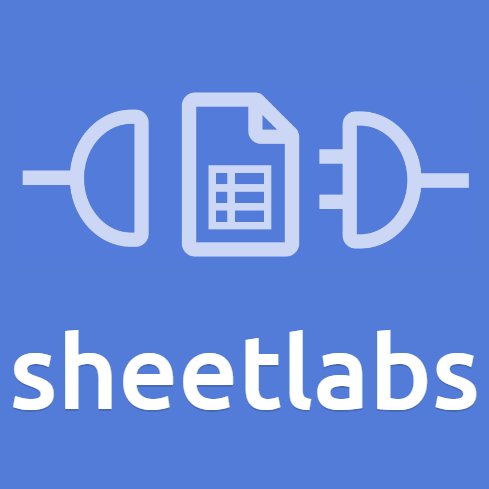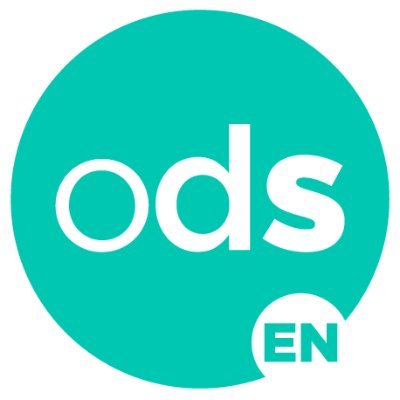Mock sample for your project: General Administration Department, Bihar API
Integrate with "General Administration Department, Bihar API" from apisetu.gov.in in no time with Mockoon's ready to use mock sample
General Administration Department, Bihar
apisetu.gov.in
Version: 3.0.0
Integrate third-party APIs faster by using "General Administration Department, Bihar API" ready-to-use mock sample. Mocking this API will allow you to start working in no time. No more accounts to create, API keys to provision, accesses to configure, unplanned downtime, just work.
Improve your integration tests by mocking third-party APIs and cover more edge cases: slow response time, random failures, etc.
Description
General Administration Department, Bihar (http://gad.bih.nic.in/) is LIVE with DigiLocker. You can fetch your EWS certificate into your DigiLocker user account.
Other APIs by apisetu.gov.in
Transport Department, Gujarat
apisetu.gov.in
Driving License (DL) and Vehicle Registration Certificate (RC) of the State, as available on Parivahan Sewa (http://parivahan.co.in/) of Ministry of Road Transport and Highways, are available on DigiLocker. Citizens can pull these documents into their DigiLocker accounts.
Ministry of Road Transport and Highways
apisetu.gov.in
Driving License (DL) & Vehicle Registration Certificate (RC) as available in Ministry of Transport's SARATHI & VAHAN portals (http://morth.nic.in/) can be pulled by citizens into their DigiLocker accounts.
Transport Department, Lakshadweep
apisetu.gov.in
Driving License (DL) and Vehicle Registration Certificate (RC) of the State, as available on Parivahan Sewa (http://parivahan.co.in/) of Ministry of Road Transport and Highways, are available on DigiLocker. Citizens can pull these documents into their DigiLocker accounts.
Transport Department, Delhi
apisetu.gov.in
Driving License (DL) and Vehicle Registration Certificate (RC) of the State, as available on Parivahan Sewa (http://parivahan.co.in/) of Ministry of Road Transport and Highways, are available on DigiLocker. Citizens can pull these documents into their DigiLocker accounts.
Transport Department, Tamil Nadu
apisetu.gov.in
Driving License (DL) and Vehicle Registration Certificate (RC) of the State, as available on Parivahan Sewa (http://parivahan.co.in/) of Ministry of Road Transport and Highways, are available on DigiLocker. Citizens can pull these documents into their DigiLocker accounts.
Transport Department, Punjab
apisetu.gov.in
Driving License (DL) and Vehicle Registration Certificate (RC) of the State, as available on Parivahan Sewa (http://parivahan.co.in/) of Ministry of Road Transport and Highways, are available on DigiLocker. Citizens can pull these documents into their DigiLocker accounts.
NIESBUD
apisetu.gov.in
Training certificates as issued by NIESBUD can be downloaded by Citizen in his/her DigiLocker account.
Tata AIG General Insurance Company Ltd.
apisetu.gov.in
Insurance policies issued by Tata AIG (https://www.tataaig.com) that are available can be fetched by Customers into their DigiLocker accounts.
Ministry of Skill Development And Entrepreneurship
apisetu.gov.in
National Council for Vocational Training (NCVT) under Ministry of Skill Development And Entrepreneurship has been entrusted with the responsibilities of prescribing standards and curricula for craftsmen training and conducting All India Trade Tests and awarding National Trade Certificates. All the ITI certificates under the purview of NCVT are available to download through Citizen's DigiLocker account.
PGIMER, Chandigarh
apisetu.gov.in
The Postgraduate Institute of Medical Education and Research (PGIMER), Chandigarh provides patient's clinical laboratory reports to DigiLocker.
NCERT
apisetu.gov.in
Certificates for Class X National Talent Search Examination as Issued by NCERT can be downloaded in citizen's DigiLocker account.
Punjab School Education Board, Punjab
apisetu.gov.in
Punjab School Education Board (http://www.pseb.ac.in) has made available 2018-20 Class V, VIII, X and XII Certificate cum Detailed Marks Sheet in DigiLocker, which can be pulled by students into their accounts.
Other APIs in the same category
National Insurance Company Ltd.
apisetu.gov.in
APIs provided by National Insurance Company Ltd..

vs API
Introduction
This API returns data regarding almost all nouns in vedic literature. The results are JSON objects that contain the word transliterated to the Roman script, the word in the Nagari script, the meaning of the word, and the category the word belongs to. Proper nouns are not included (yet).
The API uses the Swagger 2.0 specification.
Authentication
This is an open API.
Try it out
This sandbox can be used to get data for only one kind of resource, that is, to fetch data for a string contained in the meaning of any of the words.
The remaining resources work a similar fashion. For details, see the reference documentation.
This API returns data regarding almost all nouns in vedic literature. The results are JSON objects that contain the word transliterated to the Roman script, the word in the Nagari script, the meaning of the word, and the category the word belongs to. Proper nouns are not included (yet).
The API uses the Swagger 2.0 specification.
Authentication
This is an open API.
Try it out
This sandbox can be used to get data for only one kind of resource, that is, to fetch data for a string contained in the meaning of any of the words.
The remaining resources work a similar fashion. For details, see the reference documentation.
Medcorder Nearby Doctor API
medcorder.com
Returns doctors near a client given a lat/lon and autocomplete text.

Top Stories
The Top Stories API provides lists of articles and associated images by section.

U.S. EPA Enforcement and Compliance History Online (ECHO) - Safe Drinking Water Act
Enforcement and Compliance History Online (ECHO) is a tool developed and maintained by EPA's Office of Enforcement and Compliance Assurance for public use. ECHO provides integrated compliance and enforcement information for over 1 million regulated facilities nationwide.
SDW Rest Services provides multiple service endpoints, each with specific capabilities, to search and retrieve data on public water systems regulated under the Safe Drinking Water Act (SDWA). The returned results reflect data drawn from EPA's Federal Safe Drinking Water Information System (SDWIS) database.
\
The getsystems, getqid, and get_download end points are meant to be used together.
\
The recommended use scenario for getsystems, getqid, and get_downoad is:
\
1) Use getsystems to validate passed query parameters, obtain summary statistics and to obtain a queryid (QID). QIDs are time sensitive and will be valid for approximately 30 minutes.
2) Use get_qid, with the returned QID, to paginate through arrays of water system results.
3) Use get_download, with the returned QID, to generate a Comma Separated Value (CSV) file of water system information that meets the QID query criteria.
\
\
Use the qcolumns parameter to customize your search results. Use the Metadata service endpoint for a list of available output objects, their Column Ids, and their definitions to help you build your customized output.
\
Additional ECHO Resources: Web Services, About ECHO's Data, Data Downloads
SDW Rest Services provides multiple service endpoints, each with specific capabilities, to search and retrieve data on public water systems regulated under the Safe Drinking Water Act (SDWA). The returned results reflect data drawn from EPA's Federal Safe Drinking Water Information System (SDWIS) database.
\
The getsystems, getqid, and get_download end points are meant to be used together.
\
The recommended use scenario for getsystems, getqid, and get_downoad is:
\
1) Use getsystems to validate passed query parameters, obtain summary statistics and to obtain a queryid (QID). QIDs are time sensitive and will be valid for approximately 30 minutes.
2) Use get_qid, with the returned QID, to paginate through arrays of water system results.
3) Use get_download, with the returned QID, to generate a Comma Separated Value (CSV) file of water system information that meets the QID query criteria.
\
\
Use the qcolumns parameter to customize your search results. Use the Metadata service endpoint for a list of available output objects, their Column Ids, and their definitions to help you build your customized output.
\
Additional ECHO Resources: Web Services, About ECHO's Data, Data Downloads

Lumminary API
lumminary.com
Introduction
The Lumminary API was built to allow third parties to interact with Lumminary customers and gain access to their genetic data. The Lumminary API is fast, scalable and highly secure. All requests to the Lumminary API take place over SSL, which means all communication of Customer data is encrypted.
Before we dive in, some definitions. This is what we mean by:
|Term|Definition|
|-----------|-----------|
|Third party|A third party (also referred to as "partner" or as "you") is a company which offers services and products using genetic data.|
|Lumminary clients|The Lumminary client (also referred to as "customer") is an individual who has created an account on the Lumminary platform.|
|Lumminary|This is us - our services including the Lumminary platform, the API, the DNA App Store, the DNA Vault, the "Connect with Lumminary" button, and the website in its totality. |
|CWL|This is the acronym for the "Connect with Lumminary" button.|
|dataset|This is the term we use when we refer to a customer's genetic data.|
|Lumminary API|This is a library/module that you can use to integrate your apps with the Lumminary platform.|
|Lumminary toolkit|This is a stand alone application which helps you integrate with Lumminary without writing any code or interacting with the Lumminary API.|
Let's dive in, now.
Overview
Install Lumminary API Client and Toolkit
Obtaining credentials
Query customers authorizations
Query customer genetic data
Submit reports
"Connect with Lumminary" button
API specs
Overview
In order to use Lumminary services, you'll need to install the Lumminary API Client or Toolkit. The Lumminary API Client and Toolkit are available in multiple programming languages, and we also provide a sandbox environment which you can use for integration and tests.
There are a couple of differences between the API Client and the Toolkit. Mainly, it's about the ease of use for integration. The Toolkit is basically a stand-alone application that facilitates the integration with the Lumminary API without the need to modify your already existing code.
You use the Lumminary API Client when you want to integrate it inside your own application. This means it gives you full flexibility regarding the integration into your own workflow.
You use the Lumminary Toolkit for an integration where the Toolkit is placed alongside your own application. You can use the Toolkit from the CLI - for example, to run a cronjob that processes incoming orders. The Toolkit uses the Lumminary API Client.
Install Lumminary API Client and/or Toolkit
We provide the Lumminary API Client and Toolkit in multiple programming languages - default are PHP (minimum version 7.0), Python2.7 and Python3. However, if you need them in another language (Java, Obj-C, JavaScript, C#, Perl, CURL), please contact us.
How to install the Lumminary API Client
PHP example:
The PHP Lumminary API Client is available at: https://github.com/Lumminary/lumminary-api-client-php
If you are already using Composer, you can import the project by adding the following to your composer.json
| Error Id | Error Message |
|:-----------------:|:---------------------------------------------------------------------------------------------|
| 1 | Invalid Security Token |
| 2 | Invalid Access Scopes |
| 3 | Customer refuses your request (this happens when the customer cancels instead of granting access) |
The Lumminary API was built to allow third parties to interact with Lumminary customers and gain access to their genetic data. The Lumminary API is fast, scalable and highly secure. All requests to the Lumminary API take place over SSL, which means all communication of Customer data is encrypted.
Before we dive in, some definitions. This is what we mean by:
|Term|Definition|
|-----------|-----------|
|Third party|A third party (also referred to as "partner" or as "you") is a company which offers services and products using genetic data.|
|Lumminary clients|The Lumminary client (also referred to as "customer") is an individual who has created an account on the Lumminary platform.|
|Lumminary|This is us - our services including the Lumminary platform, the API, the DNA App Store, the DNA Vault, the "Connect with Lumminary" button, and the website in its totality. |
|CWL|This is the acronym for the "Connect with Lumminary" button.|
|dataset|This is the term we use when we refer to a customer's genetic data.|
|Lumminary API|This is a library/module that you can use to integrate your apps with the Lumminary platform.|
|Lumminary toolkit|This is a stand alone application which helps you integrate with Lumminary without writing any code or interacting with the Lumminary API.|
Let's dive in, now.
Overview
Install Lumminary API Client and Toolkit
Obtaining credentials
Query customers authorizations
Query customer genetic data
Submit reports
"Connect with Lumminary" button
API specs
Overview
In order to use Lumminary services, you'll need to install the Lumminary API Client or Toolkit. The Lumminary API Client and Toolkit are available in multiple programming languages, and we also provide a sandbox environment which you can use for integration and tests.
There are a couple of differences between the API Client and the Toolkit. Mainly, it's about the ease of use for integration. The Toolkit is basically a stand-alone application that facilitates the integration with the Lumminary API without the need to modify your already existing code.
You use the Lumminary API Client when you want to integrate it inside your own application. This means it gives you full flexibility regarding the integration into your own workflow.
You use the Lumminary Toolkit for an integration where the Toolkit is placed alongside your own application. You can use the Toolkit from the CLI - for example, to run a cronjob that processes incoming orders. The Toolkit uses the Lumminary API Client.
Install Lumminary API Client and/or Toolkit
We provide the Lumminary API Client and Toolkit in multiple programming languages - default are PHP (minimum version 7.0), Python2.7 and Python3. However, if you need them in another language (Java, Obj-C, JavaScript, C#, Perl, CURL), please contact us.
How to install the Lumminary API Client
PHP example:
The PHP Lumminary API Client is available at: https://github.com/Lumminary/lumminary-api-client-php
If you are already using Composer, you can import the project by adding the following to your composer.json
| Error Id | Error Message |
|:-----------------:|:---------------------------------------------------------------------------------------------|
| 1 | Invalid Security Token |
| 2 | Invalid Access Scopes |
| 3 | Customer refuses your request (this happens when the customer cancels instead of granting access) |

opendatasoft
opendatasoft.com
Transport Department, Meghalaya
apisetu.gov.in
Driving License (DL) and Vehicle Registration Certificate (RC) of the State, as available on Parivahan Sewa (http://parivahan.co.in/) of Ministry of Road Transport and Highways, are available on DigiLocker. Citizens can pull these documents into their DigiLocker accounts.
Health Repository Provider Specifications for HIP
The following are the specifications for the APIs to be implemented at the Health Repository end if an entity is only serving the role of a HIP. The specs are essentially duplicates from the Gateway and Health Repository, but put together so as to make it clear to HIPs which set of APIs they should implement to participate in the network.
eDistrict Odisha ServicePlus, Odisha
apisetu.gov.in
APIs provided by eDistrict Odisha ServicePlus, Odisha.

